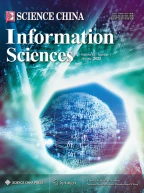Abstract
Electrical tomography (ET) imaging, developed in the 1980s, has attracted much industrial and research attentions owing to its low cost, quick response, lack of radiation exposure, and non-intrusiveness compared to other tomography modalities. However, to date applications thereof have been limited owing to its low imaging resolution. The issue with space resolution in existing ET imaging reconstruction methods is that they employ a mathematical approach based on an ill-posed equation with inconsistent solutions. In this paper, we propose a novel ET imaging method based on a data-driven approach. By recovering the cluster structures hidden in the ET imaging process followed by the application of a fuzzy clustering algorithm to identify the cluster structures, there is no need to study the ill-posed mathematical formulation. The proposed method has been tested by means of three experiments, including image reconstructions of a human lung image and plastic rode shape, as well as two simulations executed on the Comsol platform. The results show that the proposed method can reconstruct ET images with much higher space resolution more quickly than the existing algorithms.
Similar content being viewed by others
References
Inez F. Electrical impedance tomography (EIT) in applications related to lung and ventilation: a review of experimental and clinical activities. Physiol Meas, 2000, 21: 1–12
Trevor Y. Status of electrical tomography in industrial applications. J Electron Imaging, 1990, 10: 608–619
Clay M, Ferree T. Weighted regularization in electrical impedance tomography with applications to acute cerebral stroke. IEEE Trans Med Imaging, 2002, 21: 629–637
William R. EIT reconstruction algorithms: pitfalls, challenges and recent developments. Physiol Meas, 2004, 25: 125–142
Marashdeh Q, Fan L, Du B, et al. Electrical capacitance tomography-a perspective. Ind Eng Chem Res, 2008, 47: 3708–3719
Du B, Warsito W, Fan L. Imaging the choking transition in gas-solid risers using electrical capacitance tomography. Ind Eng Chem Res, 2006, 45: 5384–5395
Yin W, Peyton A J. A planar EMT system for the detection of faults on thin metallic plates. Meas Sci Technol, 2006, 17: 2130–2135
Hayt W H, Buck J A. Engineering Electromagnetic, 7th ed. New York: McGraw-Hill, 2006
Yang W, Liu S. Electrical capacitance tomography with square sensor. Electron Lett, 1999, 35: 295–296
Cao Z, Wang H, Xu L. Electrical impedance tomography with an optimized calculable square sensor. Rev Sci Instrum, 2008, 79: 103710–103719
Santosa F, Vogelius M. A back projection algorithm for electrical impedance imaging. SIAM J Appl Math, 1990, 50: 216–243
Cheney M, Isaacson D, Newell J C, et al. Noser: an algorithm for solving the inverse conductivity problem. Int J Imaging Syst Technol, 1990, 6: 266–275
Vauhkonen M, Vadasz D, Karjalainen P A, et al. Tikhonov regularization and prior information in electrical impedance tomography. IEEE Trans Med Imaging, 1998, 17: 285–293
Hu L, Wang H X, Zhao B et al. A hybrid reconstruction algorithm for electrical impedance tomography. Meas Sci Technol, 2007, 18: 813–818
Yang W Q, Spink D M, York T A, et al. An image-reconstruction algorithm based on Landweber’s iteration method for electrical-capacitance tomography. Meas Sci Technol, 1999, 10: 1065–1069
Player M A, van Weereld J, Allen A R, et al. Truncated-Newton algorithm for three dimensional electrical impedance tomography. Electron Lett, 1999, 35: 2189–2191
Bikowski J, Mueller J. 2D EIT reconstructions using Calderon’s method. Inverse Probl Imaging, 2008, 2: 43–61
Vauhkonen M. Electrical impedance tomography and prior information. Dissertation for the Doctoral Degree. University of Kuopio, 1997
Wang M. Inverse solutions for electrical impedance tomography based on conjugate gradients methods. Meas Sci Technol, 2002, 13: 101–117
Polydorides N. Image reconstruction algorithm for soft-field tomography. Dissertation for the Doctoral Degree. University of Manchester Institute of Science and Technology, 2002
Vogel C R. Computational Methods for Inverse Problems. Philadelphia: SIAM, 2002
Xu R, Wunsch D. Survey of clustering algorithm. IEEE Trans Neural Netw, 2005, 16: 645–678
Yue S, Wang J, Wu T. A new separation measure to improve the effectiveness of the clustering validation evaluation. Inf Sci, 2010, 80: 748–764
Bezdek J C. Pattern Recognition with Fuzzy Objective Function Algorithms. New York: Plenum Press, 1981
Yue S, Wang J, Wu T. A new unsupervised approach to clustering. Sci China Inf Sci, 2010, 189: 1345–1357
Wu K, Yang M. Alternative c-means clustering algorithms. Pattern Recognit, 2002, 35: 2267–2278
Xie X L, Beni G. A validity measure for fuzzy clustering. IEEE Trans Pattern Anal Mach Intell, 1991, 13: 841–847
Taflove A, Hagness S C. Computational Electromagnetic: The Finite Difference Time-Domain Method, 3rd ed. Boston: Artech House, 2005
Ni G Z, Yang S Y, Qian X Y, et al. Numerical Calculation of Engineering Electromagnetic Field (in Chinese). Beijing: Machinery Industry Press, 2004
Murai T, Kagawa Y. Electrical impedance computed tomography based on a finite element model. IEEE Trans Biomed Eng, 1985, 32: 177–184
Wu K, Yang M. Alternative c-means clustering algorithms. Pattern Recognit, 2002, 35: 2267–2278
Zhang D, Chen S. Clustering incomplete data using kernel-based fuzzy c-means algorithm. Neural Process Lett, 2003, 18: 155–162
Yang W Q, Spink D M, York T A, et al. An image-reconstruction algorithm based on Landweber’s iteration method for electrical-capacitance tomography. Meas Sci Technol, 1999, 10: 1065–1069
Soleimani M, Lionheart W. Nonlinear image reconstruction for electrical capacitance tomography using experimental data. Meas Sci Technol, 2005, 16: 1987–1996
Author information
Authors and Affiliations
Corresponding author
Rights and permissions
About this article
Cite this article
Yue, S., Wu, T., Cui, L. et al. Clustering mechanism for electric tomography imaging. Sci. China Inf. Sci. 55, 2849–2864 (2012). https://doi.org/10.1007/s11432-012-4748-7
Received:
Accepted:
Published:
Issue Date:
DOI: https://doi.org/10.1007/s11432-012-4748-7
